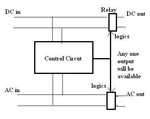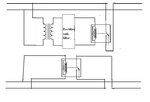shaku
Junior Member level 1
Hi,
I am looking for relay (relay circuit) which can operate on wide voltage range. I need to design relay circuit which can switch between two voltage ranges.
I have one voltage range between 20-40 V and other is 100-280 V.
I need to switch relay between this two range. For example, if my input voltage is 35, it trips to path "A". And on the other side, if my input is 250, it trips to path "B".
How can I design this kind of circuit? I am still learning electronics as I am a student of 2nd-year university.
This is a part of my project.
Thank you,
sjs
I am looking for relay (relay circuit) which can operate on wide voltage range. I need to design relay circuit which can switch between two voltage ranges.
I have one voltage range between 20-40 V and other is 100-280 V.
I need to switch relay between this two range. For example, if my input voltage is 35, it trips to path "A". And on the other side, if my input is 250, it trips to path "B".
How can I design this kind of circuit? I am still learning electronics as I am a student of 2nd-year university.
This is a part of my project.
Thank you,
sjs


